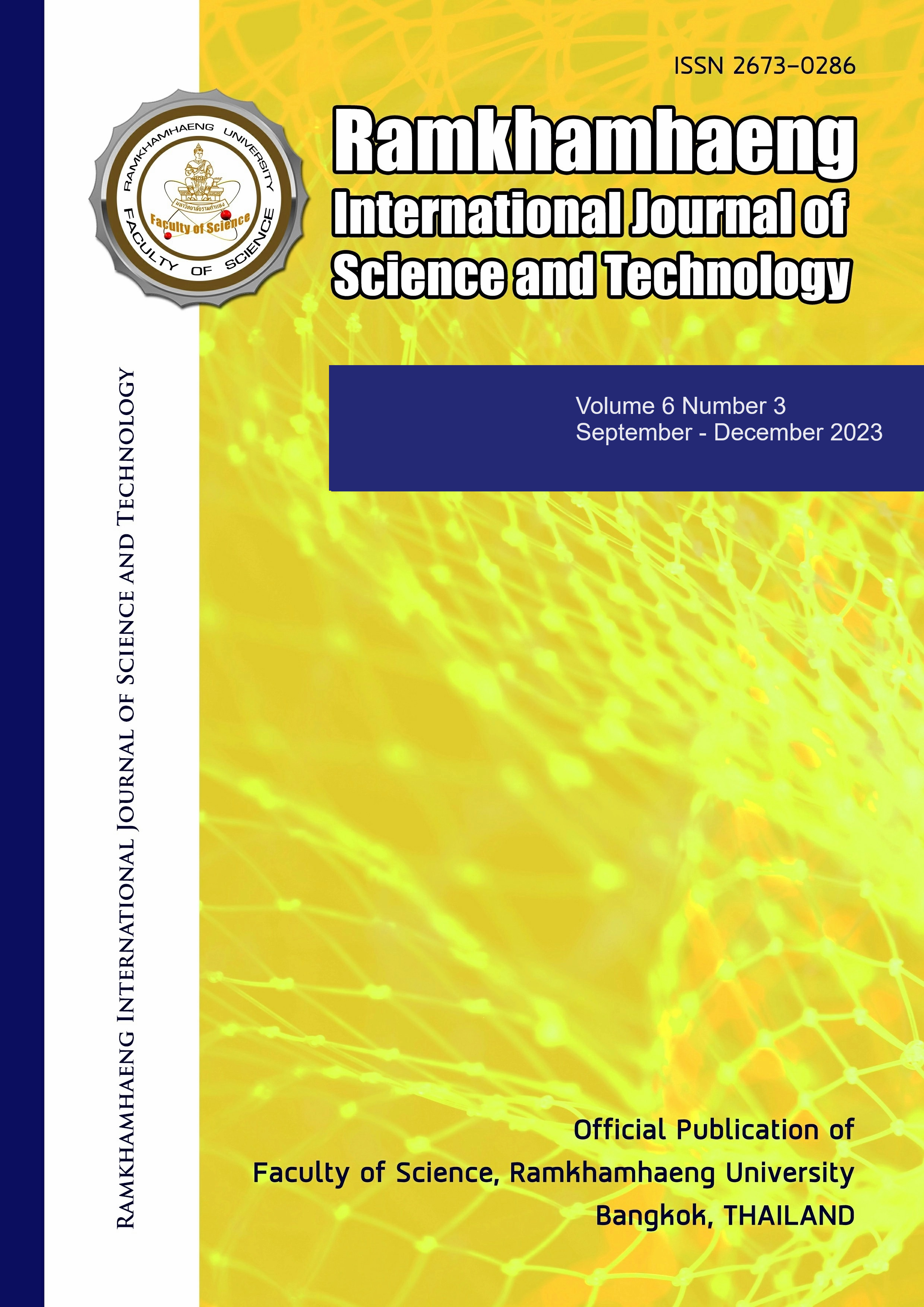Seasonal changes of meiofauna assemblage at Hin Ploeng underwater pinnacle, Rayong Province, the Eastern Gulf of Thailand
Keywords:
diversity, Gulf of Thailand, meiofauna, sediment, underwater pinnacleAbstract
Meiofauna in sediments are important components of the seafloor, coral reefs, and associated ecosystems, playing vital roles in the marine benthic food web and biogeochemical cycles. Understanding the dynamics of meiofauna in marine ecosystems in Thailand is still limited, particularly in underwater pinnacle ecosystems. This study aims to examine the seasonal changes of meiofauna at Hin Ploeng, an underwater pinnacle located in Rayong Province, the Eastern Gulf of Thailand. The meiofauna samples were taken in both summer and rainy seasons using a PVC core of 3.5 cm diameter. Eighteen groups of meiofauna were found with the dominant groups of Foraminifera, Nematoda, Harpacticoida, Ostracoda, and Bivalvia. The abundance of most meiofauna (forams, nematodes, and gastropods) varied seasonally (p<0.05). The diversity of meiofauna in the rainy season (H′ = 0.43) was significantly higher than that in the summer season (H′ = 0.08) (p<0.05). This study provides crucial information on the meiofaunal assemblage from the underwater pinnacle sediments, suggesting that underwater pinnacles with diverse meiofauna have important ecological functions and processes in marine and coastal ecosystems.
References
English S, Wilkinson C, Baker V (1997) Survey manual for tropical marine resources. Australian Institute of Marine Science 390 pp.
Giere O (1993) Meiobenthology: The microscopic fauna in aquatic sediments. Springer-Verlag Berlin, Heidelberg, New York.
Goldstein ST (1999) Foraminifera: a biological overview. Modern foraminifera, pp 37–55.
Heip C, Vincx M, Vranken G (1985) The ecology of marine nematodes. Oceanogr Mar Biol Annu Rev 23:399–489.
Higgins RP, Thiel H (1988) Introduction to the study of meiofauna. Washington, DC: Smithsonian Institution Press.
Moore CG, Bett BJ (1989) The use of meiofauna in marine pollution impact assessment. Zool J Linn Soc 96:263–280.
Moreno M, Semprucci F, Vezzulli L, Balsamo M, Fabiano M, Albertelli G (2011) The use of nematodes in assessing ecological quality status in the Mediterranean coastal ecosystems. Ecol Indicat 11:328–336.
Murray JW (2006) Ecology and applications of benthic foraminifera. Cambridge university press.
Natsir SM, Subkhan M (2012) The distribution of benthic foraminifera in coral reefs community and seagrass bad of Belitung Islands based on FORAM Index. J Coast Dev15(1): 51–58.
Raes M, De Troch M, Ndaro SG, Muthumbi A, Guilini K, Vanreusel A (2007) The structuring role of microhabitat type in coral degradation zones: a case study with marine nematodes from Kenya and Zanzibar. Coral Reefs 26: 113–126.
Richert John E, Jorgensen SJ, Ketchum JT, MohajeraniL, Klimley P (2017) The Importance of Pinnacles and Seamounts to Pelagic Fishes and Fisheries off the Southern Baja California Peninsula. OFOAJ 4(2):48–65.
Rogers AD (2004) The biology, ecology and vulnerability of seamount commpieceies. IUCN, Switzerland.
Sadanandan H, Dharmalingam SN, Mouttoucomarassamy S (2023) Benthic foraminifera as bio-indicator of marine pollution in the southwestern Bay of Bengal, India. Environ Sci Pollut Res 1–18.
Sangmanee N, Sutthacheep M, Jungrak L, Rongprakhon S, Jaihan S, Plangngan P, Yeemin T (2022) Composition and abundance of meiofauna on the coral reefs at Mu Ko Surin National Park, the Andaman Sea. RIST 5(1):1–9.
Schueth JD, Frank TD (2008) Reef foraminifera as bioindicators of coral reef health: Low Isles Reef, northern Great Barrier Reef Australia. J Foram Res 38(1): 11–22.
Song Y, Yan C, Gao C, Xu H, Hua E, & Liu X (2022) Seasonal Distribution of Meiofaunal Assemblages in the Mangrove Tidal Flat of Futian, Shenzhen, China J Ocean Univ China 21(4): 955–964.
Sutthacheep M, Sangsawang L, Jungrak L, Pengsakun S, Klinthong W, Karnpakob P, Yeemin T (2023). Meiofaunal communities in coral reefs and an underwater pinnacle in Trat and Rayong Provinces, the Eastern Gulf of Thailand. RIST 6(2): 59–70.
Tomkratoke S, Sirisup S (2020) Effects of tropical cyclone paths and shelf bathymetry on inducement of severe storm surges in the Gulf of Thailand. Acta Oceanol Sin 39: 90–102.
Uthicke S, Thompson A, Schaffelke B (2010) Effectiveness of benthic foraminiferal and coral assemblages as water quality indicators on inshore reefs of the Great Barrier Reef Australia. Coral Reefs 29(1): 209–225.
Venekey V, Melo TPG, Rosa Filho JS (2019) Effects of seasonal fluctuation of amazon river discharge on the spatial and temporal changes of meiofauna and nematodes in the amazonian coast. Estuar Coast Shelf Sci 227: 106330.
Downloads
Published
Issue
Section
License
Copyright (c) 2023 Ramkhamhaeng International Journal of Science and Technology

This work is licensed under a Creative Commons Attribution-NonCommercial-NoDerivatives 4.0 International License.
Copyright Notice: a copyright on any article in the published journal is retained by the Ramkhamhaeng International Journal of Science and Technology. Readers or Users grant the right to use of the Article contained in the Content in accordance with the Creative Commons CC BY-NC-ND license and the Data contained in the Content in accordance with the Creative Commons CC BY-NC-ND.



